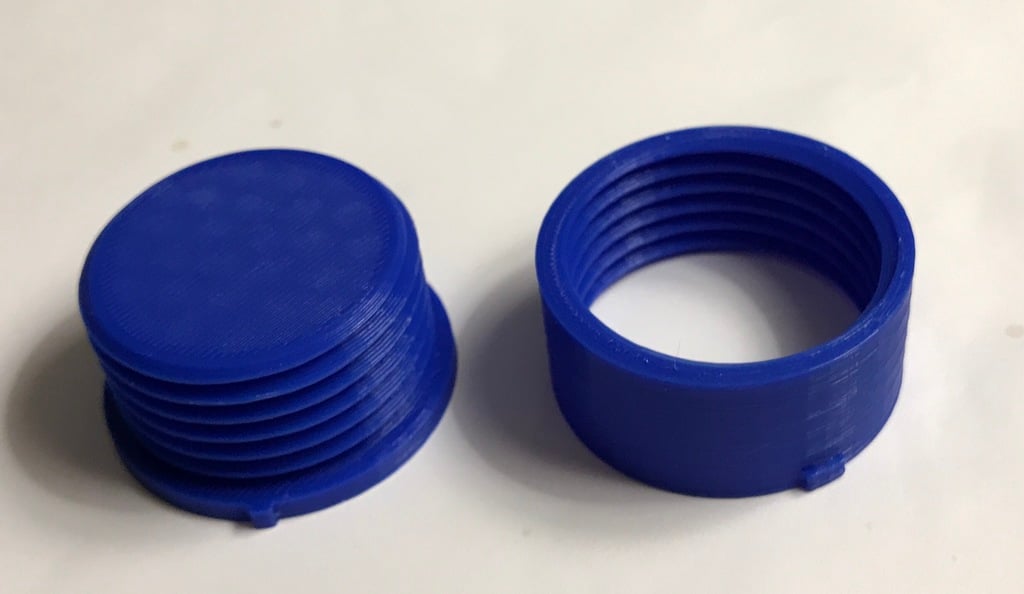
Print Working ISO Standard "M" Threads
thingiverse
Using the ISO standard as described in the attached ThreadTech diagram, I successfully printed very usable screw threads using PLA at a 0.2 line thickness. The key adaptation required was increasing the diameter of the female thread by 0.8mm, which gave me threads that mated with almost zero resistance. I could probably have safely decreased the diameter difference to 0.6mm. Note that at a diameter difference of 0.4mm, I was unable to screw the nut and bolt together. I conducted my experiment using a male effective diameter of 3.4cm with a 3mm thread pitch (P). In ISO terms, this is expressed as M34 x 3.0. I included a screenshot from Blender that shows the profiles of the male and female threads, with the above-mentioned spacing of 0.4mm radius (0.8mm diameter). P=3mm in this example. An additional design component of functional threads is that the mating ends of the thread shafts should be "camphered" at 45 degrees. This involves shaving off the edge of the outermost threads with a 45-degree conical surface. The purpose of campering is to make the threads of the two parts self-centering, align the two parts along the same axis, and avoid thread stripping. Conclusion: Given the diameter spacing adaptation required with printing tolerances using current FDM technology, it would be challenging to achieve functional ISO thread diameters below a male M8 x 1.0.
With this file you will be able to print Print Working ISO Standard "M" Threads with your 3D printer. Click on the button and save the file on your computer to work, edit or customize your design. You can also find more 3D designs for printers on Print Working ISO Standard "M" Threads.
